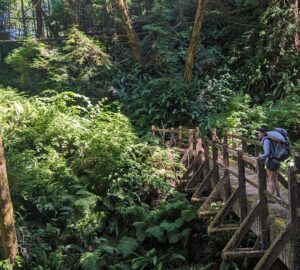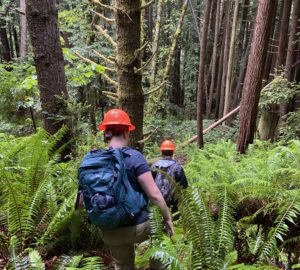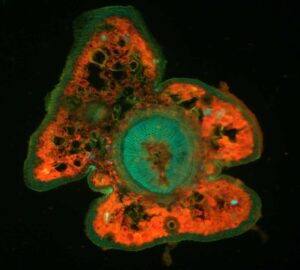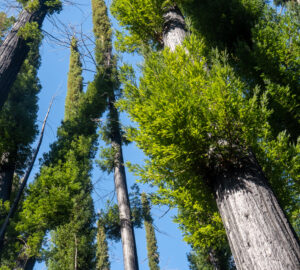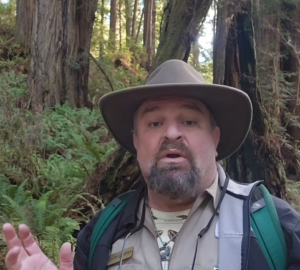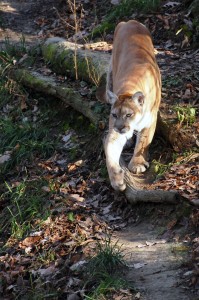
It was close to dusk when we crossed the stream, heading deeper into the forest along an old logging road. We were touring the areas of CEMEX Redwoods where restoration reserves are to be established, assessing conditions and discussing strategies to heal the forest and help return it to its full natural diversity.
The day had been a long one, and we had traveled through a good part of the 8,500 acres, visiting dry upland plateaus where the understory of the Douglas fir and hardwood forest has become choked with brush after decades without fire, deep ravines where tanoak has become dominant after repeated and heavy conifer harvests, steep hillsides where the aspect (does it face north or south?) marks the difference between dry and moist, dark and light, huckleberry and fern.
Our final stop was to be at a flat, fertile bench in which little human activity had occurred since the clear-cuts of the 19th century, where the “young” redwoods now stand proud, their massive crowns extending 40 feet on a side. To get there, however, we had to cross a stream, and walk a mile or so along an old road cut into a hillside.
Something caught my eye, and I looked down to see what was unmistakably a large pile of puma scat. Ropy, hairy, big. As I walked a couple of meters further up the trail the air was filled with the thick scent of cat. This was a scent-marking site, used by the lions to establish territories and communicate with other cats.
I looked up. The trail bank rose overhead fifteen feet or so, topped with dense brush. The darkening sky and thick forest cut visibility, or mine at least. I knew that even though I couldn’t see any cats, they could sure see me. The group had moved ahead, passed out of sight around a bend. I walked a little faster.
I didn’t see any cats that day, but knowing that they are out there brings a strange sort of comfort. The woods are big and wild, and very little reminds us more of our own smallness in such a place than the presence of large carnivores. The pumas of CEMEX Redwoods have managed to find their place here despite the years of damage done to the land; the forest around them may have changed, but their wildness is intact.
That such a creature could live in a forest recovering so well as this one raises many questions about our restoration work. Can we actually make a positive difference? Should we try? When do we act, and when do we leave things be, and where? As we begin to plan and implement the forest restoration program at CEMEX Redwoods, I’ll be returning to these questions and the answers that we find as we try to do right by the land and the creatures that call it home.

